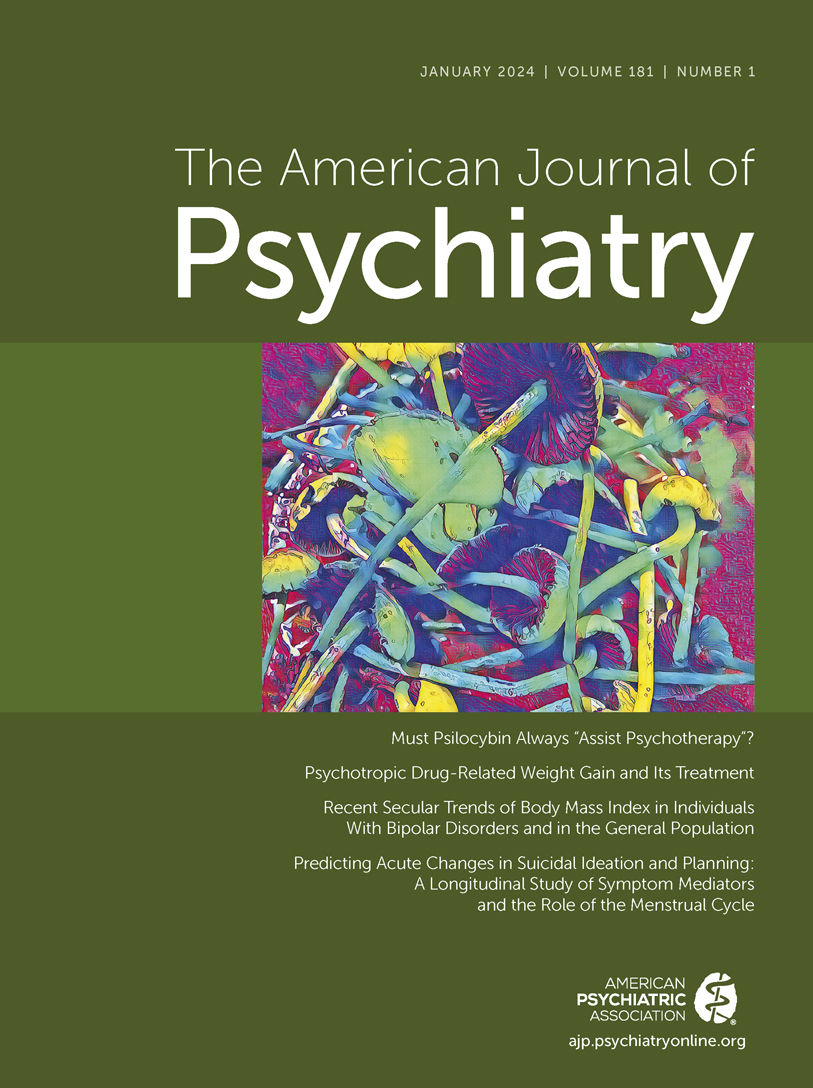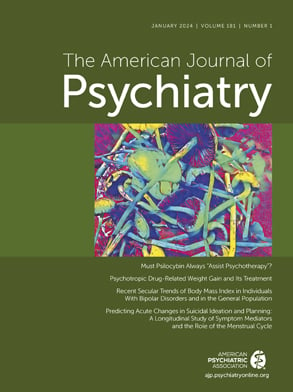Repetitive transcranial magnetic stimulation (rTMS) received U.S. Food and Drug Administration (FDA) approval in 2008 for the treatment of major depression nonresponsive to multiple medications. The original rTMS protocol requires about 45 minutes of setup and administration time using 10 Hz at 110% of the motor threshold over the left dorsolateral prefrontal cortex, with one session a day for 20–30 days. This method of administration is both cumbersome for patients and costly to administer.
Theta burst stimulation (TBS) delivers single bursts of rTMS at 50 Hz with a stimulation pattern that mimics endogenous theta rhythms and induces a key feature integral to the therapeutic benefit of TMS: long term potentiation/depression of neuronal synaptic connections. In preclinical experiments, TBS was shown to have a longer lasting effect on synaptic plasticity, with a shorter application period than rTMS (
1). The advantages of TBS were recognized as allowing clinical investigators using therapeutic intermittent TBS (iTBS) to decrease the treatment time by increasing the number of stimulations in a shorter period of time than rTMS while potentially providing a more durable therapeutic effect (
1,
2).
In 2018, the pivotal THREE-D study convincingly demonstrated the noninferiority of iTBS in adults with treatment-resistant depression (50% had failed two or more antidepressant trials) to a standard 10 Hz TMS course (
3). Later approval of iTBS protocols by the FDA has been a major step forward in the clinical administration of therapeutic brain stimulation. iTBS treatments are administered in 3 minutes compared to a 37.5-minute TMS treatment, significantly shortening the treatment time. This advance made it practical to give multiple treatments in a day and accelerate the treatment course, delivering 20 treatments and 90,000 pulses over 5 days rather than a 20–30-day treatment course (
4).
Two priority data letters published this month in the Journal provide additional clarity on the efficacy of TBS in geriatric depression, and the response when TBS is restarted in an acute trial after patients have relapsed.
The THREE-D study, like so many antidepressant trials, excluded geriatric patients and only included adults up to age 65 years old. There have been questions regarding the response rate in older adults to TMS. The concern is that geriatric depression is often accompanied by significant cortical atrophy, which can make it more difficult for the TMS pulses to reach and stimulate the cortex (
5). Batail et al. (
6) comment on the recent study by Blumberger and colleagues (
7) on the noninferiority of bilateral TBS compared to bilateral TMS over the left dorsolateral prefrontal cortex in older adults (mean age=67.1 years [SD=6.7]) with TRD. In the Blumberger et al. trial, the bilateral iTBS treatments (left iTBS and right continuous TBS) took 4 minutes to administer versus 48 minutes for the rTMS (10 Hz left and 1 Hz right) for five sessions a week over 4–6 weeks. The investigators increased the intensity of the treatments to 120% of the resting motor threshold to account for the data showing older adults require higher stimulation intensities (
8). The results of the study showed that TBS was noninferior to rTMS (35.4% vs. 32.9% remission rates, respectively) with a similar dropout rate and tolerability, no adverse effects on cognition, and markedly decreased treatment time. The antidepressant results were sustained 12 weeks after treatment.
Given these encouraging results, Batail et al. reexamined the data from the group of TRD patents 60 years and older in clinical trials by their group using a standardized accelerated iTBS protocol (10 daily sessions in 5 days delivering 90,000 pulses) over the left dorsolateral cortex guided by neuronavigation. This protocol was developed at Stanford and received clearance from the FDA for the treatment of major depressive disorder in adults who have failed to achieve satisfactory improvement from prior antidepressant medications in the current episode. They point out several advantages of an accelerated iTBS protocol in geriatric depression, including the faster time to response given the longer time it takes older patients to respond to TMS, the potential benefits of high-dose TMS over prefrontal cortex in improving cognition and perhaps delaying dementia, and the use of neuronavigation to adjust intensity based on the individual’s distance from the coil to the cortex to account for atrophy. In their post hoc analysis they included 14 patients (mean age=66.5 years) with moderately treatment-resistant depression and demonstrated a robust response to treatment (two-sided, paired t test: t=7.82, df=13, p<0.001).
The second priority data letter, also with Dr. Nolan Williams as the senior author and now with his Stanford colleagues, uses the Stanford iTBS protocol and examined whether patients who had previously responded to the protocol would respond when rechallenged with a second acute course (
9). rTMS has been shown to be durable in naturalistic follow up studies (
10–
12) and to respond to reintroduction of rTMS (
10,
13,
14). Geoly et al. (
9) evaluated 27 patients who underwent retreatment after a mean of 26.5 weeks (SD=25.1) using the Stanford protocol. Of 22 patients who had initially remitted after the index course, 20 (91%) remitted with retreatment, supporting retreatment as an effective strategy in patients who relapse from their initial course of accelerated iTBS.
Overall, these priority data letters provide additional support for the use of an accelerated iTBS protocol in the treatment of major depression. What is less clear is whether the Stanford protocol, which specifies 10 treatments over 5 days with neuronavigation, is integral to the response or if other accelerated protocols including those using external landmarks rather than MRI-guided neuronavigation could be as efficacious. Accelerated rTMS protocols without neuronavigation in patients with TRD have shown to be effective for at least two decades (
15).
rTMS was first approved for the treatment of depression 15 years ago, and iTBS is a potentially game changing advance in the field with a markedly decreased administration time delivering an increased number of pulses with the potential to shorten the response time compared to standard rTMS protocols. But a number of questions remain, including durability, the number of treatments a day that are optimal, the number of pulses that can be safely administered, and the benefits of neuroimaging to identify targets for stimulation, which adds costs and decreases accessibility (
16). And a key practical issue for many patients is that most insurance carriers do not cover this treatment, which can cost up to $15,000.
TBS technology has shown promise in advancing the TMS field, increasing access and potentially improving response in TRD. These reports add to the data supporting iTBS. Clearly, iTBS has the potential to improve depression treatment for our patients, but we need to think broadly about the most effective protocol to administer treatments.

